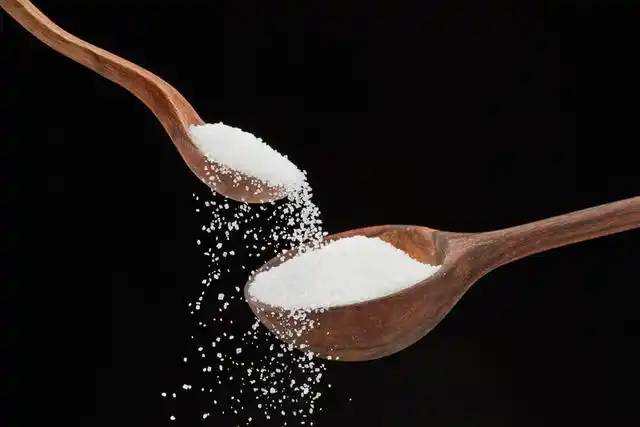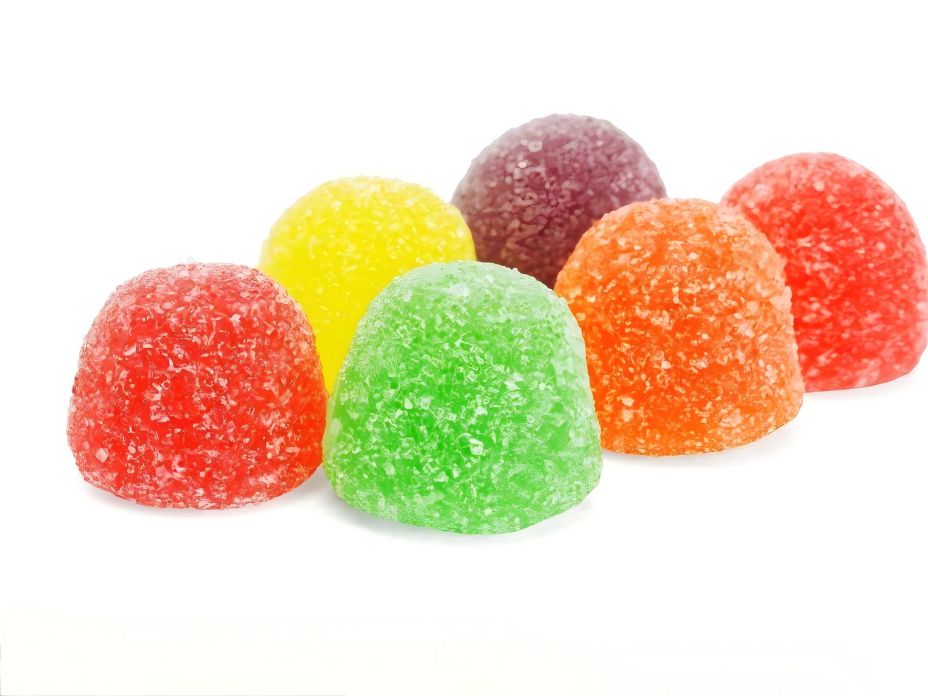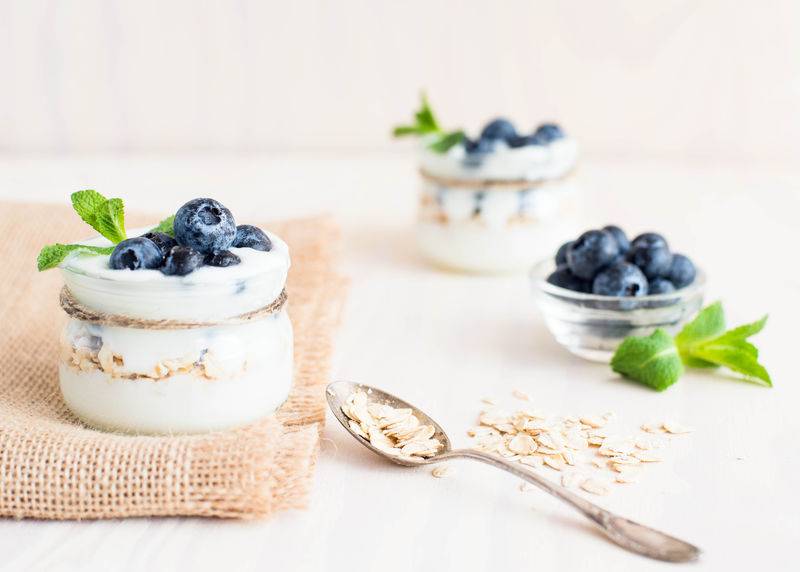Is Xylitol Safe?
The word xylitol comes from the Greek word “xylos” meaning wood and “itol” meaning sugar alcohol [1]. During the Second World War, the shortage of resources such as sugar led to in-depth research into xylitol as a sweetener. The World Health Organization (WHO) Technical Report 2003 No. 916 states that balancing diet and calorie intake according to caloric expenditure is essential to guide a healthy lifestyle. Therefore, research into healthier food alternatives is a hot topic [2].
With people becoming increasingly health and fitness conscious, more and more consumers are inclined to choose sugar-free, low-calorie healthy food products, and the demand for xylitol is also increasing. In 2015, the global xylitol market was 737.2 million US dollars, and it is expected to grow to 1.37 billion US dollars by 2025 [3], showing a huge market prospect. This article provides a review of the physicochemical properties, preparation methods, functional activities, safety evaluations, and applications in the food industry of xylitol, providing scientific information and a reference basis for the further development of xylitol.
1. Physicochemical properties of xylitol
Xylitol, also known as pentitol, is a type of polyol with the molecular formula C5H12O5 and the chemical name 1,2,3,4,5-pentahydroxypentane. It has a relative molecular mass of 152.15 g/mol and is the sweetest sweetener among polyols. The chemical structure of xylitol is shown in Figure 1. It consists of a five-carbon backbone, in which the carbonyl group (- - C=O) hydrocarbon is replaced by an alcohol group (- - CH-OH). An increase in the number of carbon atoms in the backbone structure is inversely proportional to the rate of absorption in the intestine. Absorbed xylitol is converted into glycogen or glucose and slowly released into the bloodstream, which is beneficial for maintaining stable glucose levels in both diabetic and non-diabetic populations [4].
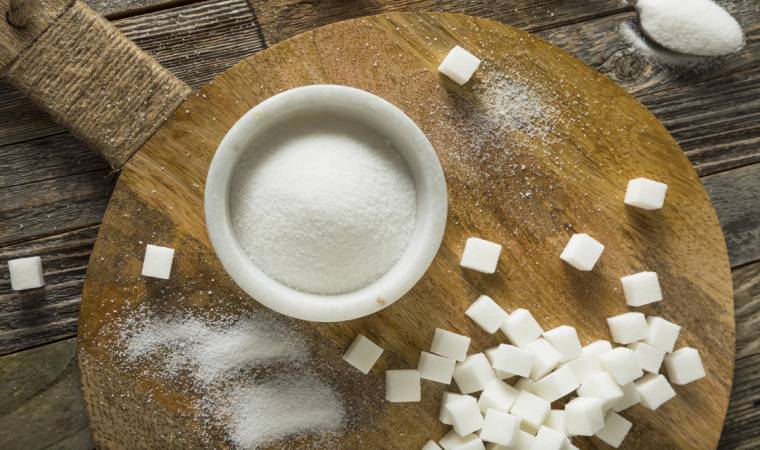
Xylitol is a white solid, crystalline or granular structure that is odorless and has a melting point of 92-96°C. Xylitol has a very high solubility in water and only slightly soluble in organic solvents such as methanol and ethanol. At 20 °C, the solubility of xylitol is 169 g, the heat of solution is -145.6 J/g, the heat energy is 16.99 J/g, the sweetness and flavor are similar to ordinary white sugar, 1 g of xylitol contains only 2.4 cal of heat value , which is 2/3 less than the same amount of white sugar (1 g of white sugar has 4 cal) – has the advantage of being low in calories [5], can reduce weight, inhibit the accumulation of lipids and the synthesis of cholesterol [6], and is a new type of low-calorie sweetener (Table 1) [7]. Xylitol quickly dissolves and absorbs heat on contact with the mouth, so foods containing xylitol are perceived as having a cooling effect. It is therefore often used as a food sweetener and novel cooling agent. In the 1960s, xylitol was widely used in the food, beverage, confectionery and pharmaceutical industries due to its natural properties [8].
2. Xylitol preparation methods
Xylitol preparation methods include direct extraction, chemical synthesis, and bioconversion (Figure 3). In the past 20 years, xylitol production technology has become increasingly mature, and chemical synthesis and bioconversion have become the main methods for producing xylitol.
2.1. Direct extraction method
Xylitol was first isolated from the bark of beech trees by German scientist Emil Fischer in 1890, and he was awarded the Nobel Prize in Chemistry in 1902. Xylitol is naturally found in plant-based raw materials in nature, such as strawberries, yellow plums, cauliflower and other fruits and vegetables (300 to 935 mg/100 g dry weight) [9]. Xylitol can be directly extracted from plant materials using solvent extraction, but the content of xylitol in plant materials such as fruits and vegetables is low. Although the content of xylitol in apricots and plums is higher than that in other plant materials, and the content of xylitol in green plums is about 1% of the dry weight, direct extraction of xylitol from these materials requires special equipment, which is energy-intensive and results in high production costs.

2.2 Chemical synthesis
In the 1970s, Finland took the lead in separating D-xylose from various lignocellulosic materials using chromatography. D-xylose was then reduced to xylitol under high temperature, high pressure and the catalysis of hydrogen, and this method was developed into an industrial xylitol production method [10].
Xylitol can be produced by directly reducing pure D-xylose through chemical synthesis [11], or it can be synthesized from xylose-rich lignocellulosic biomass. At present, the commercial production of xylitol at home and abroad is carried out using raw materials rich in pentosans, such as natural wheat straw, wheat bran, corn stalks, corn cobs, etc., through pretreatment such as acid hydrolysis (e.g., HCl, H2SO4), and then xylose is purified from the hemicellulose fraction, and a hydrogenation reaction occurs under the action of a catalyst. Nickel is commonly used as a catalyst in chemical synthesis, and the nickel catalytic process is used to achieve large-scale production of xylitol [12-13] (Figure 2).
2.2.1 Key processes of chemical synthesis
2.2.1.1 Hydrolysis
The hydrolysis of lignocellulosic biomass can be carried out using acid or enzymes. In chemical hydrolysis, sulfuric acid is widely used because it is less volatile and does not corrode equipment. Acid hydrolysis has the advantages of being low cost, simple, effective, economically viable and fast compared to enzymatic hydrolysis. During acid hydrolysis, changing the acid concentration, temperature, residence time and liquid-to-feed ratio plays a crucial role in sugar recovery [14].
2.2.1.2 Separation and purification
After acid hydrolysis, the raw material needs to be purified from the hemicellulose fraction to obtain xylose for chemical synthesis. The hemicellulose fraction of the raw material contains polymers of other sugars, so the chemical synthesis process includes intensive purification and separation steps to remove these by-products. A patented invention has disclosed a method for preparing xylitol directly from biomass hemicellulose using a magnetic solid acid catalyst, and no by-products or excessive hydrolysis products are produced during the hydrolysis and hydrogenation processes [15].
2.2.1.3 Hydrogenation reaction
In catalytic hydrogenation, the nickel catalyst requires a high purity xylitol solution, and an ultrapure xylose solution is needed. The conversion rate can be as high as 98% when nickel is used as the catalyst. When the hydrogenation reaction is carried out in a continuous reactor containing Ru/SiO2 and Ru/ZrO2 catalysts, the yield of xylitol is 99.9% [14]. Nickel catalysts are severely lost during the catalytic process and are toxic, polluting the environment and seriously affecting the development of enterprises and international competition. A recent study by Adier et al. [16] found that the use of iron as a promoter for nickel during the aqueous phase hydrogenation of xylose exhibited higher catalytic activity and stability than the monometallic nickel catalyst, and could effectively improve the catalyst activity. Iron is a promising nickel promoter because of its abundant reserves and low price.
The complex hydrogenation equipment and the difficulty of operating at high temperatures and pressures have a negative impact on the economic feasibility of xylitol chemical synthesis. Therefore, we need to continue to improve and explore the research on xylitol preparation methods, with a view to obtaining safer, non-polluting, low-cost xylitol production methods, in order to improve the economic feasibility and international competitiveness of xylitol.
2.3 Bioconversion method
The biotechnological route uses agricultural waste containing polydextrose (such as corncobs, bagasse and olive pomace) [17] to obtain a xylose hydrolysate through dilute acid hydrolysis. Microorganisms (such as bacteria, molds and yeasts) can then metabolize xylose through the xylose isomerase pathway or the xylose reductase-xylitol dehydrogenase pathway to reduce xylose to xylitol [18]. The use of microbial fermentation of hemicellulose hydrolysate to produce xylitol has the advantages of mild reaction conditions, simple operation, environmental friendliness and relatively low pollution, as well as reliable product quality and safety. It has become a potential low-cost alternative method for obtaining this polyol [19].
2.3.1 Key bioconversion processes
2.3.1.1 Selection of microorganisms
While using these microorganisms, yeast is considered the most effective producer of xylitol and is a natural strain that consumes xylose. Raquel et al. [20] isolated the Amazonian Schizosaccharomyces pombe was found to have a high ability to convert xylose to xylitol. Débora et al. [21] showed that xylitol extraction using Amazonian Schizosaccharomyces yeast fermented bagasse and recovered by supercritical fluid reached a purity of 99.59%. Zhao Xiangying et al. [22] found that the addition of glucose during the cultivation of the Saccharomyces cerevisiae strain SFX-Y9 can increase the cell concentration and shorten the cultivation time, and has the prospect of industrial development and application. However, the xylitol yield is still relatively low, so further strain improvement is necessary to increase the xylose conversion rate. Zhang [23] showed that by mutagenizing tropical Candida, a strain with high xylitol production can be selected, and the xylitol yield is increased by 22%. During the accumulation of xylitol, Candida can maintain a reduction-oxidation balance, which is an advantage over engineered brewing yeasts. The market for xylitol is constantly expanding. If a high-yield strain of xylose is exploited, the cost of producing xylitol can be reduced by using bioconversion instead of chemical synthesis.
2.3.1.2 Detoxification of hemicellulose hydrolysate
Agricultural waste is hydrolyzed with dilute acid to obtain a hemicellulose hydrolysate, which is concentrated, detoxified, and fermented to obtain a hemicellulose hydrolysate. Fermentation inhibitory compounds such as acetic acid and formic acid, furfural, 5-hydroxymethylfurfural, and phenolic compounds may be generated during acid pretreatment. Removing inhibitory compounds from the hydrolysate is a major obstacle to product recovery costs. According to a literature report [18], xylitol crystals were recovered by fermenting a bacterial strain and detoxifying with 2% activated carbon, and the regeneration and reuse of the adsorbent reduced downstream costs by about 32%. The harmful substances produced during the hydrolysis process inhibit microbial growth. By changing the temperature, time, pH and adsorption conditions used in the treatment of bagasse hydrolysate, the production of harmful substances by microorganisms can be effectively improved, which has a significant impact on microbial fermentation [24].
Although the mild operating conditions of the bioconversion technology route are a green process, there are still bottlenecks and challenges in the bioconversion technology route that hinder the expansion of the bioconversion process. Further optimization of the adaptability of microbial strains is a modern strategy and technical research direction for improving the biological yield of xylitol; the development of engineered microbial strains to improve the yield of xylose to xylitol bioconversion; and the optimization of the xylitol purification process to improve the fermentation efficiency of the strain, recovery rate, and shorten the conversion cycle. In addition, the determination of the feasibility of the process for large-scale implementation requires techno-economic analysis of the entire production chain. There are still challenges to be overcome before the bioconversion technology route becomes commercially viable.
3 Xylitol applications in the food industry
Xylitol has both extremely similar physical and chemical properties to white sugar and its own unique properties and various physiological activities, and is widely used in the food industry [25].
3.1 Xylitol as a functional sweetener in food
3.1.1 Xylitol in diabetic foods
Diabetes mellitus (DM) is an endocrine disease characterized by β-cell dysfunction or insulin resistance, caused by insulin deficiency, which leads to abnormal increases in blood glucose. It is one of the most common and fastest growing diseases worldwide [26]. It is estimated that 578 million people will have diabetes in 2030, an increase of 51% (700 million) by 2045 [27].
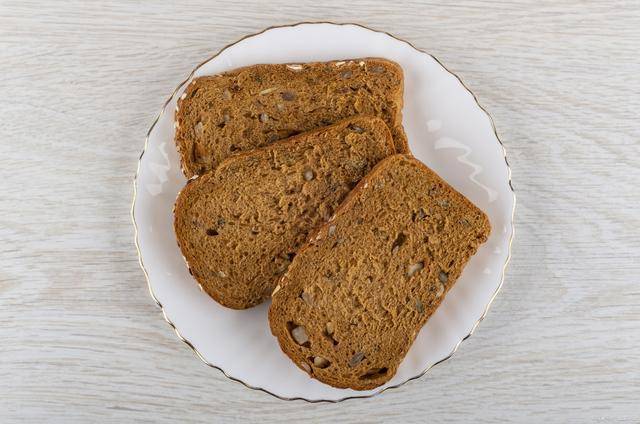
Xylitol has antioxidant properties and can effectively improve glucose tolerance and serum insulin concentration, while reducing blood glucose and serum fructosamine [28]. It can reduce the sugar content of food while maintaining the sweetness of the food, and will not cause blood glucose to rise. It can be used in a variety of diabetic foods and diet foods [29]. Li Xiangmei et al. [30] developed products suitable for diabetics, such as xylitol pumpkin sauce, pumpkin preserves and pumpkin meat drinks.
3.1.2 Xylitol in diet foods
Xylitol is a good substitute for functional sweeteners suitable for obese patients. After ingestion of xylitol, gastric emptying is significantly slowed down, hindering digestion and metabolism in the body. This can prevent the body's hunger from increasing and the intake of food, and help prevent obesity [31]. In order to reduce the risk of diseases such as obesity, diabetes and hypertension, some researchers have developed low-sugar cookies made from butter, xylitol and high-amylose corn flour [32]. Among health foods [33], only two health foods containing xylitol have been approved for sale by the State Food and Drug Administration (Chenlong Bowling Ginseng and Jinyu Xylitol Powder).
3.2 Xylitol in meat products
Xylitol itself has a sweet taste and a certain water retention capacity. It can impart a certain flavor to the product while also interacting with other flavors. Some studies have found that treating salted fish with xylitol instead of salt can not only promote the release of free amino acids in fish, especially flavor amino acids, but also improve water retention, thereby significantly improving the flavor and taste of the fish, and significantly improved [34], and it can also delay the changes in the water activity (aw) of salted and dried fish during storage and the protein-lipid interactions in the muscle, as well as delaying the formation of peroxides, making salted and dried fish more elastic [35].
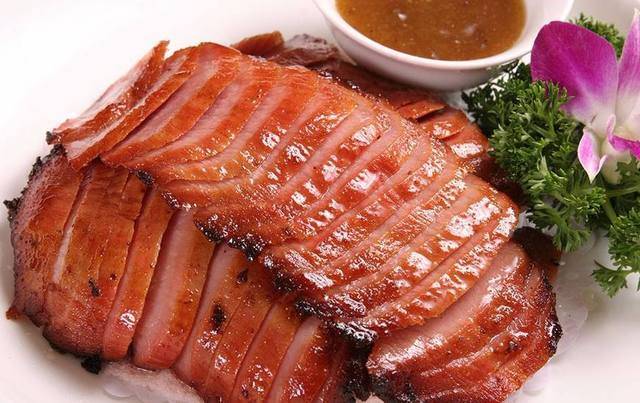
3.3 Xylitol in beverages
Xylitol is a low-calorie, functional sugar substitute that is widely added to new types of dairy products [36-37] and beverages. Yin Jiale et al. [38] reported that blending xylitol with dandelion and ginseng compound health drinks gives the drink a sweet and fragrant taste.
The particle size, heat of dissolution and solubility of xylitol at oral temperature determine the strength of the cooling effect. Xylitol has a low heat of dissolution and dissolves in the mouth with a strong and unique cooling sensation [39]. Xylitol can help improve the sweetness and cooling sensation of some foods and beverages. Its use in beverages not only effectively controls consumers' calorie intake, but also helps stabilize dietary fiber. Beverages with added xylitol have high nutritional value, unique flavor and excellent texture [40].
In the brewing of wine, xylitol is a good substitute for reducing sugars in wine, and it can meet the dietary needs of different consumers through different flavors and functional nutrition [41]. The experimental results of Wang Xiaodan et al. [42] show that although the content of xylitol and other alcohols in the entire wine body only accounts for about 0.03%, it contributes to the sweet taste of the wine body and gives a pleasant and comfortable taste experience. The interaction and harmony between xylitol and other ingredients give Hengshui Laobaigan Liquor its sweet, mellow, elegant, harmonious and long-lasting characteristics. When used as a nutritional additive in other types of alcohol, xylitol can be directly mixed into the alcohol to improve the overall style and flavour, making the drink smoother, milder, more aromatic and delicious. Japanese research has shown that the addition of about 0.5% xylitol can improve the color of the wine, while inhibiting the reproduction of microorganisms in the wine to produce acid substances and inhibiting the deterioration of the wine [43].
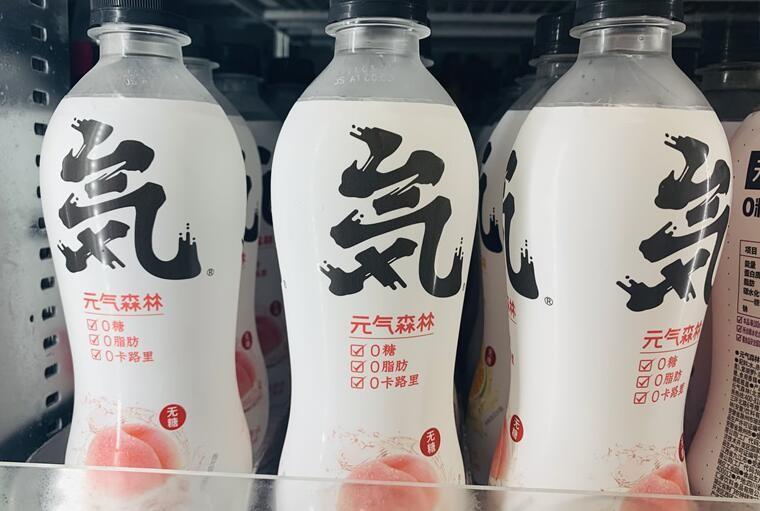
3.4 Xylitol in bakery products
Xylitol is used in food formulations to improve the shelf life, color and texture of foods. Xylitol does not undergo a Maillard reaction with amino acids when heated, and does not affect the color of foods or reduce the nutritional value of proteins [44]. Xylitol is used in place of white sugar in the food processing industry to make cakes and other sweet foods. The cakes made in this way not only have a similar appearance, hardness, volume and porosity to those made with white sugar, but also have fewer calories. This optimizes the properties of the cakes and makes them safer and of higher quality [45]. In addition, xylitol can effectively slow down the formation of gluten in the cake, weaken the gelation effect of starch, and make the cake softer and more delicate in texture [46]. Diabetics can also choose this type of sweet food [47].
Improve the textural properties of starchy foods. Starchy foods will experience a series of problems after being stored for a period of time, such as moisture loss, product hardening, and poor texture, which seriously affect their quality. Yang Heng et al. [48] studied the effects of xylitol and mannitol on wheat flour. They found that under high temperature and pressure conditions, xylitol and mannitol form hydrogen bonds with proteins, promote the formation of gluten networks, reduce product hardness, and enhance tensile resistance. This improves the physical and gelatinization properties of the dough and enhances the quality of extruded bakery products.
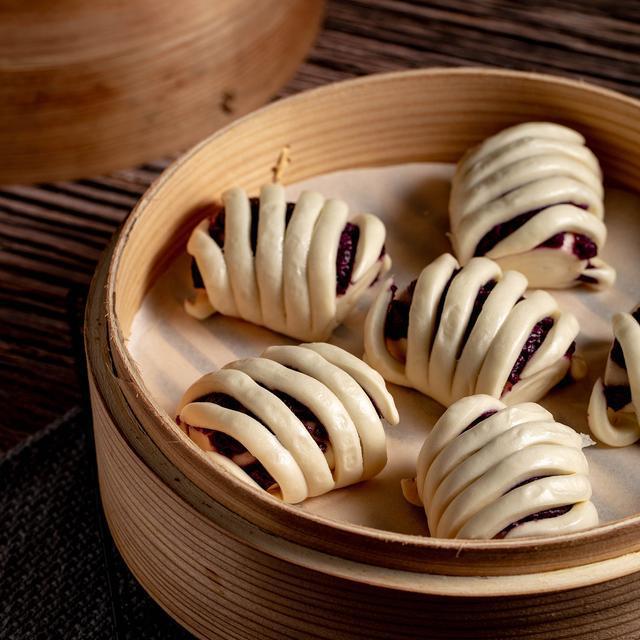
3.5 Xylitol in jams and sweets
Xylitol has a preventive and therapeutic effect against tooth decay [49]. Tooth decay is one of the most common chronic diseases in humans. Carbohydrates in food (such as sucrose and glucose) are fermented by microorganisms such as Streptococcus mutans in the mouth to produce lactic acid and other organic acids, which cause erosion and decalcification, leading to the formation of cavities and decay. Microbial fermentation is the main factor in tooth decay [50]. Research has confirmed that xylitol, as a sucrose substitute, cannot be fermented by Streptococcus mutans. Adding xylitol to the diet can reduce the total number of bacteria in plaque and the number of Streptococcus mutans, thereby inhibiting dental caries. It has good potential for preventing dental caries, and xylitol has the best cariostatic effect among sweeteners [51]. Daily use of 10 to 15 g xylitol can prevent dental caries, and the dosage can be appropriately increased if dental caries is severe and oral hygiene is poor [52]. From the perspective of some beneficial health effects, xylitol is widely used in chewing gum for caries prevention, as well as in soft candies, hard candies, tablet candies and other foods that value oral health [53-54]. Studies have shown that xylitol chewing gum has good potential for caries prevention [55].
Xylitol has a moisturizing effect. As a sugar substitute, the higher the added amount, the higher the water activity and the better the water absorption. Rajnibhas et al. [56] found that the increasing trend of water activity in fruit-based chewy candies added with xylitol can provide and maintain a soft and chewy texture. At the same time, the main volatile compounds that were previously trapped in the amorphous matrix due to moisture absorption can easily diffuse out of the matrix, enhancing the mobility of the aroma molecules in the soft candy matrix and the aroma in the gas phase. Xylitol, as a sweetener, not only provides sweetness, but also enhances the aroma and flavor of chewy candies. It also reduces the hardness, cohesiveness, chewiness and gelling of the candy by combining with the moisture in the product while reducing the sugar content of the product. Cheng Liyuan et al. [57] compared the effects of six sugars on the jam made from the leaves of the Japanese ivy (Parthenocissus tricuspidata). They found that the addition of xylitol to the jam resulted in the highest amount of volatile flavour substances and a unique flavour. In addition, xylitol can not only supplement a certain sweetness in yogurt production, but also create a good flavour and texture [58].
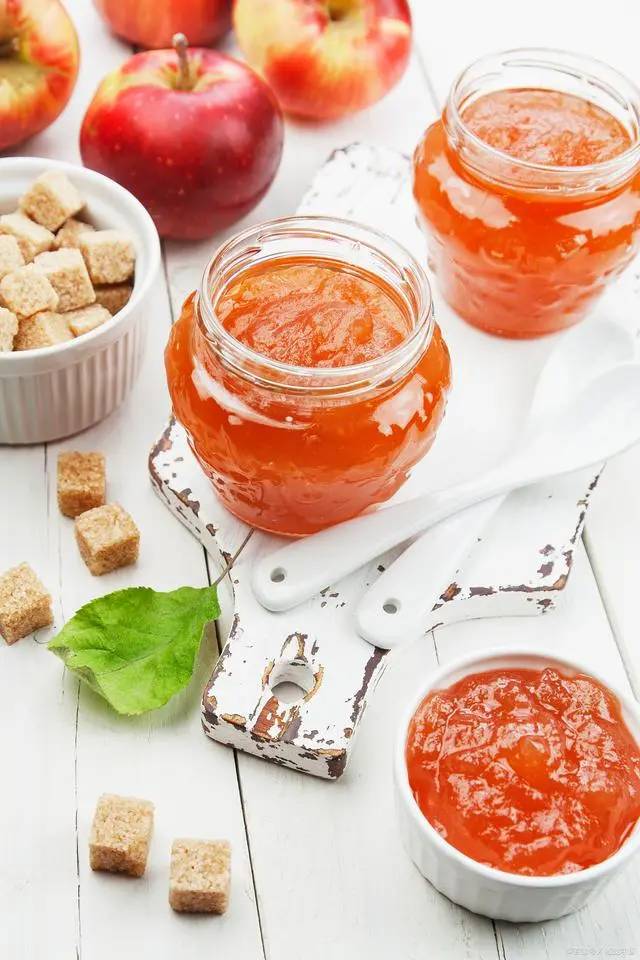
3.6 Application of xylitol as a thickener and emulsifier
Xylitol and carrageenan are used together as a thickener to produce low-sugar yogurt. The research results of Huang Min et al. [59] show that the interaction between polyols such as xylitol and carrageenan helps to increase hydrogen bonding and improve the gel network of the carrageenan aqueous solution.
Additives that improve emulsifying properties. Xylitol reacts with stearic acid to form xylitol anhydride mono stearate. Xylitol anhydride monostearate is lipophilic and is an oil-in-water emulsifier. It can be used as an edible emulsifier in margarine to evenly emulsify water and butter [60]. Qiu et al. used biomass-based hydrogenated rosin and xylitol as raw materials to synthesize hydrogenated rosin xylitol ester (XEHR) for the first time, with xylitol as the hydrophilic part and hydrogenated rosin as the hydrophobic part. It was found that hydrogenated rosin xylitol ester has interfacial activity and emulsifying properties and can be used as an emulsifier in food [61].
4 Recommended intake and testing methods for xylitol
The World Health Organization (WHO) states that xylitol has negative results in teratogenicity and embryotoxicity tests, and negative results in in vitro and in vivo tests for mutagenicity and clastogenicity. The US Food and Drug Administration (FDA) and the Joint Expert Committee for Food Additives (JECFA) have confirmed that xylitol is a safe (GRAS) additive. It has now been approved for use as an additive, supplement and pharmaceutical agent in more than 50 countries around the world [62].
4.1 Recommended intake of xylitol
Currently, the recommended daily intake of xylitol is about 10 g for adults and 5 g for infants aged 3 to 4 years. A single dose of 10 to 30 g of xylitol is normally tolerated by healthy people without diarrhea. Due to individual differences, adults can tolerate 20 to 70 g of xylitol per day after adaptation. With gradual dose increases, some adults can tolerate more than 200 g of xylitol per day [52]. Although the Codex Alimentarius Commission (CAC) recommends an unrestricted daily intake of xylitol (ADI) [63], current research suggests that the intestinal absorption of xylitol is about 50%, and the rest is fermented by intestinal microorganisms into short chain organic acids (SCFAs) and gases [64]. Higher doses may lead to a temporary imbalance in the colon due to their low assimilation rate, resulting in temporary gastrointestinal effects such as bloating and diarrhea [65]. In summary, xylitol is safe as a food additive and has a variety of physiological effects on the human body. The amount used should be based on individual differences and tolerance.
4.2 Xylitol testing methods
The determination of xylitol content in food can be based on the national food safety standard GB 5009.279-2016 “National Food Safety Standard: Determination of Xylitol, Sorbitol, Maltitol and Erythritol in Food” - there are two main methods (high performance liquid chromatography - differential refractive index detection, high performance liquid chromatography - evaporative light scattering detection). Compared to the differential refractometer, the evaporative light scattering detector is more expensive, but its sensitivity is higher.
High-performance liquid chromatography (HPLC) requires a large number of organic reagents and specialized columns, making it expensive to analyze. Wu Aiyin et al. optimized the determination of xylitol and other sugar alcohol sweeteners in milk using gas chromatography. The method is cost-effective and highly accurate, with the advantages of simple pretreatment, etc., and is suitable for the effective determination of xylitol and other sugar alcohols in milk foods [66].
Rajapaksha et al. [67] first explored the use of direct aqueous injection (DAI) GC-MS to determine the xylitol content in chewing gum samples. This method does not require additional purification steps or sample derivatization, which shortens the analysis time. The spiked recovery of the sample was between 95% and 99%, and the RSD was between 0.17% and 0.72%, indicating that the method is a reliable quantitative method with high accuracy and precision. Li Jiang et al. [68] established a new method for the determination of xylitol in food—capillary zone electrophoresis—indirect ultraviolet method. This method not only has high separation efficiency and short analysis time, but also has the characteristics of being environmentally friendly and highly accurate.
5 Conclusion and outlook
With the increasing number of diabetes cases and the continuous growth of adult obesity rates, people's awareness of health is gradually increasing, and the market demand for xylitol is also increasing. Therefore, the preparation method of xylitol needs to be continuously improved and explored in depth to obtain a pollution-free and low-cost production method of xylitol. According to various studies on xylitol in recent years, most of the xylitol ingested by the body in the diet is digested by intestinal microorganisms, producing metabolites that are beneficial to human health. Xylitol has probiotic functions that are beneficial to oral health, inhibit lipid accumulation, and suppress cholesterol synthesis. Therefore, xylitol is widely used in various foods and is a good substitute for functional sweeteners for people with diabetes and obesity.
The impact of xylitol on food quality. Researchers have combined knowledge from different disciplines to analyze the flavor of xylitol in food, with the aim of optimizing product production processes and improving product quality. Existing research on the effect of xylitol on food flavor substances is a branch of food flavor science. Research on the mechanism of action of xylitol in food and the effect of oral temperature on flavor perception during food tasting needs to combine human perception and physiological characteristics. There have been few reports on this type of research, and it will be the future direction of xylitol research. Analyzing the food flavor of xylitol and exploring more of its mechanisms of action will help to broaden the scope of its application and give full play to its great potential.
Reference
[1] Gasmi Benahmed A ,Gasmi A ,Arshad M ,et al. Health benefits of xylitol [J]. Applied Microbiology and Biotechnology, 2020 ,104(17):7225-7237.
[2]Delgado Arcaño Y ,Valmaña García O D ,Mandelli D ,et al. Xylitol :A review on the progress and challenges of its production by chemical route [J]. Catalysis Today ,2020 ,344 : 2-14.
[3] Saha B C ,Kennedy G J. Optimization of xylitol production from xylose by a novel Arabitol limited co-producing Barnettozyma populi NRRL Y-12728 [J] . Preparative Biochemistry & Biotechnology ,2021 ,51(8):761-768.
[4]Janket S J,Benwait J ,Isaac P ,et al. Oral and systemic effects of xylitol consumption [J]. Caries Research ,2019 ,53(5): 491-501.
[5]Mussatto S I. Application of xylitol in food formulations and benefits for health [M]//da Silva S ,Chandel A. D-Xylitol. Berlin,Heidelberg :Springer ,2012 :309-323.
[6] Xiang S ,Ye K ,Li M ,et al. Xylitol enhances synthesis of propionate in the colon via cross-feeding of gut microbiota [J]. Microbiome ,2021 ,9 :1-21.
[7] Tang Mei. The influence of the aldose reductase gene of Pichia pastoris on the fermentation of xylitol by Escherichia coli [D]. Wuhan: Hubei University of Technology, 2021.
[8] Grembecka M. Sugar alcohols—Their role in the modern world of sweeteners :A review [J] . European Food Research and Technology ,2015 ,241(1):1-14.
[9] Ahuj a V ,Macho M ,Ewe D ,et al. Biological and pharmacological potential of xylitol :A molecular insight of unique metabolism [J]. Foods ,2020 ,9(11):1592.
[10]Dasgupta D,Bandhu S,Adhikari D K ,et al. Challenges and prospects of xylitol production with whole cell bio-catalysis : A review [J]. Microbiological Research ,2017 ,197 :9-21.
[11]Nigam P ,Singh D. Processes of fermentative production of Xylitol—a sugar substitute [J]. Process Biochemistry ,1995, 30(2):117-124.
[12] Ven kate s war R ao L ,Goli J K ,Gentela J ,et al. Bioconversion of lignocellulosic biomass to xylitol :An overview [J]. Bioresource Technology ,2016 ,213 :299- 310.
[13]Bonfiglio F ,Cagno M ,Yamakawa C K ,et al. Production of xylitol and carotenoids from switchgrass and Eucalyptus globulus hydrolysates obtained by intensified steam explosion pretreatment [J]. Industrial Crops and Products,2021 ,170 : 113800.
[14]Gallezot P. Metal catalysts for the conversion of biomass to chemicals [M]//New and Future Developments in Catalysis. Amsterdam:Elsevier ,2013 :1-27.
[15] Zeng Xianhai, Zhang Liangqing, Tang Xing, et al. A method for preparing xylitol directly from hemicellulose: CN109879721B [P]. 2021-10-01.
[16] Sadier A ,Shi D C ,Mamede A S ,et al. Selective aqueous phase hydrogenation of xylose to xylitol over SiO2-supported Ni and Ni-Fe catalysts :Benefits of promotion by Fe [J]. Applied Catalysis B:Environmental ,2021 ,298 :120564.
[17]Narisetty V ,Castro E ,Durgapal S ,et al. High level xylitol production by Pichia fermentans using non-detoxified xylose-rich sugarcane bagasse and olive pits hydrolysates [J]. Bioresource Technology ,2021 ,342 :126005.
[18]Ahuja V ,Bhatt A K ,Mehta S ,et al. Xylitol production by Pseudomonas gessardii VXlt-16 from sugarcane bagasse hydrolysate and cost analysis [J]. Bioprocess and Biosystems Engineering ,2022,45(6):1019-1031.
[19]Vallejos M E ,Chade M ,Mereles E B ,et al. Strategies of detoxification and fermentation for biotechnological production of xylitol from sugarcane bagasse [J]. Industrial Crops and Products ,2016 ,91 :161-169.
[20] Cadete R M ,Melo M A ,Lopes M R ,et al. Candida amazonensis sp. nov. ,an ascomycetous yeast isolated from rotting wood in the Amazonian forest [J]. International Journal of Systematic and Evolutionary Microbiology ,2012 ,62 (Pt_6):1438-1440.
[21] Silva D D V ,Dussán K J ,Idarraga A ,et al. Production and purification of xylitol by Scheffersomyces amazonenses via sugarcane hemicellulosic hydrolysate [J] . Biofuels, Bioproducts and Biorefining ,2020 ,14(2):344-356.
[22] Zhao Xiangying, Zhang Lihe, Han Yanlei, et al. Effect of glucose on xylitol fermentation by the tropical yeast strain SFX-Y9 [J]. Food and Fermentation Industry, 2017, 43(11): 107-111.
[23] Zhang C ,Qin J F ,Dai Y W ,et al. Atmospheric and room temperature plasma(ARTP)mutagenesis enables xylitol over-production with yeast Candida tropicalis [J]. Journal of Biotechnology ,2019 ,296 :7-13.
[24]Marton J M ,Felipe M G A ,Almeida e Silva J B ,et al. Evaluation of the activated charcoals and adsorption conditions used in the treatment of sugarcane bagasse hydrolysate for xylitol production [J] . Brazilian Journal of Chemical Engineering ,2006 ,23(1):9-21.
[24] Zhu Yuting, Hu Zhihe. Research progress of sugar-free foods [J]. Beverage Industry, 2021, 24(3): 75-79.
[26] Cole J B ,Florez J C. Genetics of diabetes mellitus and diabetes complications [J] . Nature Reviews Nephrology, 2020 ,16(7):377-390.
[27] Saeedi P ,Petersohn I ,Salpea P ,et al. Global and regional diabetes prevalence estimates for 2019 and projections for 2030 and 2045 :Results from the International Diabetes Federation Diabetes Atlas ,9th edition [J]. Diabetes Research and Clinical Practice ,2019 ,157 :107843.
[28]Mejia E ,Pearlman M. Natural alternative sweeteners and diabetes management [J]. Current Diabetes Reports ,2019, 19(12):1-10.
[29] Ge Yin, Xiang Shasha, Zhang Yalin, et al. Research progress on the prebiotic function of xylitol [J]. Food and Fermentation Industry, 2021, 47(5): 267-272.
[30] Li Xiangmei, Ma Shaohuai. Physiological functions of xylitol and trial production of xylitol-containing foods [J]. Food Industry Science and Technology, 2003, 24(7): 51-53.
[31]Janket S J ,Benwait J ,Isaac P ,et al. Oral and systemic effects of xylitol consumption [J]. Caries Research ,2019 ,53(5):491-501.
[32] Song Y X ,Li X,Zhong YY. Optimization of butter,xylitol, and high-amylose maize flour on developing a low-sugar cookie [J] . Food Science & Nutrition ,2019 ,7 (11): 3414-3424.
[33] Li X, Zhao Z. Safety evaluation and pharmaceutical monitoring of drugs containing xylitol [J]. Drug Evaluation, 2018, 15(6): 3-6, 26.
[34] Zhang Yun, Zhang Wei, Wang Lan, et al. Effect of partial replacement of table salt with xylitol on the quality of largemouth black bass [J]. Food Industry, 2020, 41(12): 82-86.
[35]Minh N P ,Nhi T T Y ,Dao T T H ,et al. Effectiveness of sugar alcohol replacement to quality characteristics of dried salted white sardine during storage[J] . Journal of Pharmaceutical Sciences and Research ,2019 ,11 (4): 1397-1400.
[36]Wang J X. Property of xylitol and its application in food industry [J]. Food Science ,2004.
[37]de Carvalho D A ,de Freitas Silva Valente G ,Assumpção G M P. External preference map to evaluate the acceptance of light and diet yogurt preparedusingnatural sweeteners [J]. Ciência Rural ,2018,48(6).
[38] Yin Jiale, Chen Yue, Zhang Haiyue. Development of a dandelion ginseng compound health drink and its anti-fatigue function [J]. Food Science and Technology, 2020, 45(11): 82-89.
[39] Ning Zhunmei. Research progress on the application of sugar substitutes in fillings and formulation optimization methods for candy [J]. Food Industry Science and Technology, 2021, 42(23): 420-426.
[40]Luo D,Mu T H ,Sun H N ,et al. Optimization of the formula and processing of a sweet potato leaf powder-based beverage [J]. Food Science & Nutrition ,2020 ,8(6):2680-2691.
[41] Ni Bin, Luo Siming, Peng Jinlong. Research on the optimization of the brewing process of xylitol liqueur [J]. Brewing Science and Technology, 2021 (9): 42-45.
[42] Wang Xiaodan, Xiang Yuping, Yin Li, et al. Study on sugars and sugar alcohols in Lao Baigan Baijiu [J]. China Brewing, 2021, 40(1): 70-74.
[43] Gong Wei. Preparation and properties of xylitol aromatic polyurethane [D]. Changchun: Changchun University of Technology, 2013.
[44]Parajó J C ,Domínguez H ,Domínguez J. Biotechnological production of xylitol. part 1 :Interest of xylitol and fundamentals of its biosynthesis [J]. Bioresource Technology, 1998 ,65(3):191-201.
[45]Javanmardi Fardin Mousavi miR-Michael Ghazani Afsaneh T Mahmoudpour Mansour Taram Faran Pilevar Zahra. Study on the effect of xylitol and maltitol as alternative sweeteners in sponge cakes [J]. Current Nutrition & Food Science ,2020, 16(3):403-409.
[46] Qiu Wencong, Yang Qianqian, Li Shili, et al. Preparation, process optimization and texture property analysis of sugar-free mulberry angel cake [J]. Food Industry Science and Technology, 2022, 43 (22): 198-204.
[47] Guo X X ,Zhang R H ,Li Z ,et al. A novel pathway construction in Candida tropicalis for direct xylitol conversion from corncob xylan [J]. Bioresource Technology ,2013 ,128: 547-552.
[48]Yang H,Fu Y,Zhang Y D ,et al. Evaluation of mannitoland xylitol on the quality of wheat flour and extruded flour products [J] . International Journal of Food Science & Technology, 2021 ,56(8):4119-4128.
[49]Mäkinen K K. Sugar alcohol sweeteners as alternatives to sugar with special consideration of xylitol [J]. Medical Principles and Practice :International Journal of the Kuwait University, Health Science Centre ,2011 ,20(4):303-320.
[50]Wang Y B ,Chuang C Y ,Liao J F. Effects of xylitol in chewing gum on dental plaque and Streptococcus mutans [J]. Journal of Food and Drug Analysis ,2020 ,14(1):84-88.
[51]FAHİNUR ERTUĞ R U L ,Rengİ N E L T E M,Ataman B A. Bacteriological effects of xylitol and different carbohydrate containing diets in Swiss albino rats inoculated with Streptococcus mutans CCUG 6519 [J] . Turkish Journal of Medical Sciences ,2002 ,32(1):13-19.
[52]Mäkinen K K. Gastrointestinal disturbances associated with the consumption of sugar alcohols with special consideration of xylitol :Scientific review and instructions for dentists and other health-care professionals [J]. International Journal of
Dentistry ,2016 ,2016 :1-16.
[53] Liu Qianting, Yang Yingci, Liao Yunyi, et al. Development of sugar-free gel candies using xylitol and sorbitol [J]. Agro-Products Processing, 2020 (12): 6-10.
[54] Zhao Yuguo, Ding Yong, Liang Shuang, et al. Research and development of xylitol tablet candy [J]. Modern Food, 2019 (24): 99-101.
[55]Gul P,Akgul N ,Seven N. Anticariogenic potential of white cheese ,xylitol chewing gum ,and black tea [J]. European Journal of Dentistry ,2018 ,12(2):199-203.
[56] Sukeaw Samakradhamrongthai R ,Jannu T. Effect of stevia, xylitol ,and corn syrup in the development of velvet tamarind (Dialium indum L.)chewy candy [J] . Food Chemistry, 2021 ,352 :129353.
[57] Cheng Liyuan, Deng Jing, Li Xiao, et al. Effect of sugar type on the quality of Trifoliate orange jam [J]. China Food Additives, 2021, 32(9): 121-129.
[58] Wang Yuqian, Fan Yiwen, Zhang Xuexin, et al. Optimization of the process formula for Huangjing jujube yogurt using the response surface method [J]. Food Research and Development, 2021, 42(9): 67-74.
[59]Huang M ,Mao Y H ,Mao Y Z ,et al. Xylitol and maltitol improve the rheological property of kappa-carrageenan [J]. Foods ,2021 ,11(1):51.
[60] Pan Qi, Hu Minghua, Zhang Suying, et al. Research on the application of edible emulsifiers in cake production [J]. Heilongjiang Science, 2020, 11(12): 40-41.
[61] Qiu H,Chen X P,Wei X J,et al. The emulsifying properties of hydrogenated rosin xylitol ester as a biomass surfactant for food : Effect of pH and salts [J]. Molecules,2020,25(2):302.[62]Thompson M. Anti-inflammatory properties of xylitol in a model of chronic sinus disease [J]. 2013.
[63]Ur-Rehman S ,Mushtaq Z ,Zahoor T ,et al. Xylitol :A review on bioproduction ,application,health benefits ,and related safety issues [J]. Critical Reviews in Food Science and Nutrition ,2015 ,55(11):1514-1528.
[64] Rosado E ,Delgado-Fernández P ,de las Rivas B ,et al. Production and digestibility studies of β-galactosyl xylitol derivatives using heterogeneous catalysts of LacA β-galactosidase from Lactobacillus plantarum WCFS 1 [J] . Molecules ,2022 ,27(4):1235.
[65]Culbert S J ,Wang Y M ,Fritsche H A ,et al. Oral xylitol in American adults [J]. Nutrition Research ,1986 ,6(8): 913-922.
[66] Wu Aiying, Song Chunyan, Xiang Lixin. Determination of five sugar alcohols in milk by gas chromatography [J]. Modern Food, 2022, 28(7): 182-185.
[67] Rajapaksha S M ,Gerken K,Archer T ,et al. Extraction and analysis of xylitol in sugar-free gum samples by GC-MS with direct aqueous injection [J]. Journal of Analytical Methods in Chemistry ,2019 ,2019 :1-10.
[68] Li Jiang, Chen Tong, Ju Zhaohan, et al. Capillary zone electrophoresis-indirect ultraviolet determination of xylitol in foods [J]. Journal of Food Safety and Quality Testing, 2016, 7 (2): 791-797.


 English
English French
French Spanish
Spanish Russian
Russian Korean
Korean Japanese
Japanese